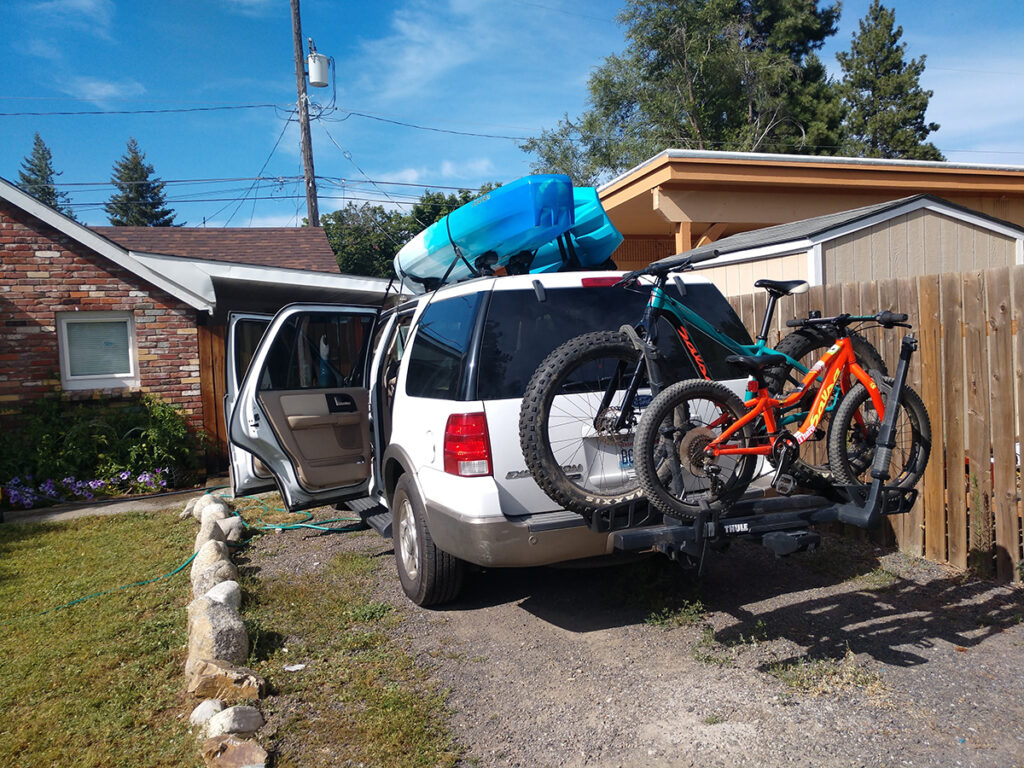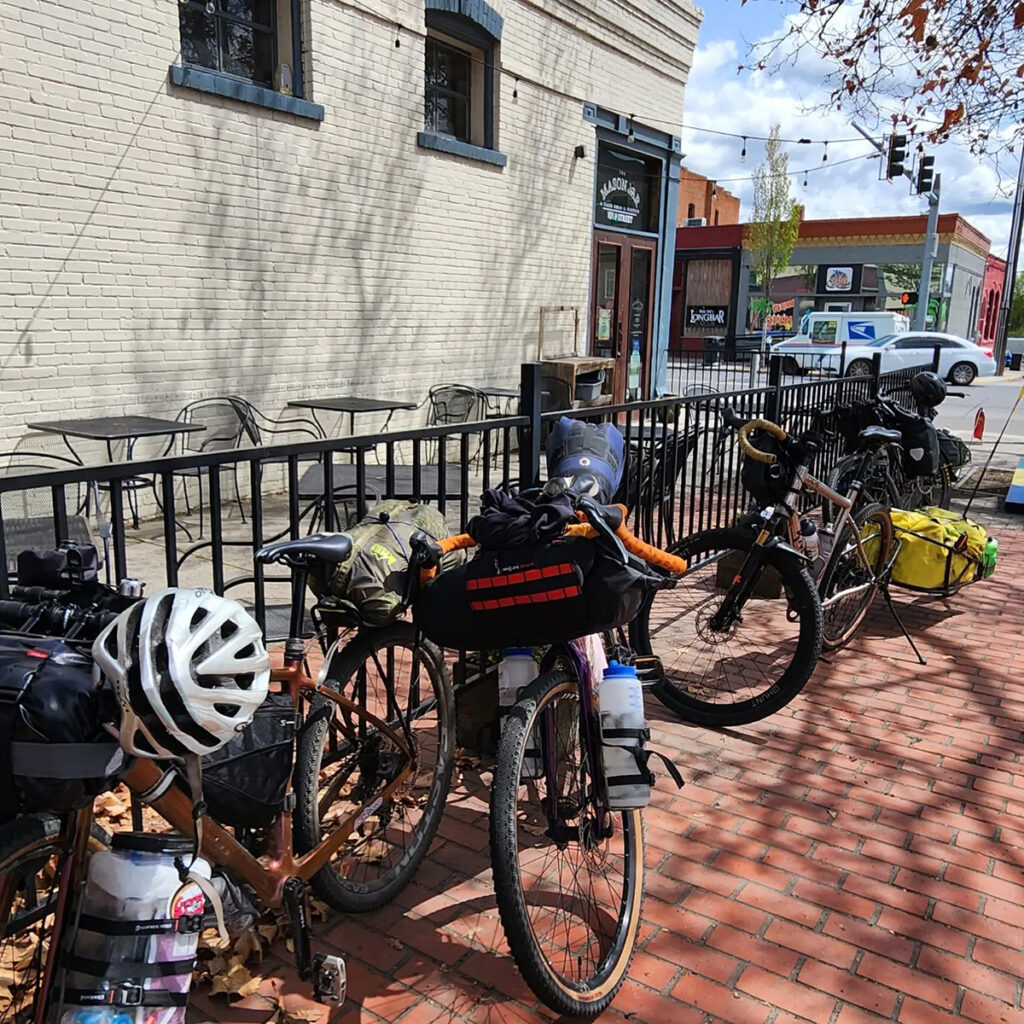Cover photo courtesy of Carol Corbin
As I squirt WD-40 into my hitch-mounted bike rack for the n’th time, the ludicrousness of transporting a vehicle (my bike) on another vehicle (my gas-guzzling SUV) strikes me again. It always does. Bikes were developed as a means of transportation. And I have purchased an expensive, heavy, complex means of transporting my bikes hundreds of miles from my garage, just to go for a bike ride. Shaking my head, I remind myself, “You know, you can just, like, get on and pedal the thing from here to somewhere else and back again, and you’ve gone on a bike ride.”
I tell myself stories about why I love the outdoors and why I bike, run, hike, camp and paddle in urban environments and wilderness. I tell myself I am an advocate for nature and wildlife, that I believe deeply in nature’s power to build and nurture healthy humans and thriving systems. And at the same time, I participate in activities that degrade soil and cause erosion, that disrupt wildlife migration corridors, and destroy vegetation. While I’m certain I live every day as a walking conundrum in many areas, this is the one that troubles me the most.

It’s no secret that human presence in nature can be, and often is, highly disruptive. In 2006, as part of my master’s program, I took a trip to a cave in western Tennessee along with about a dozen other master’s students and three professors. The entrance to the cave was on private property and access was limited (in theory) by those the property owner chose to allow on his land. The caving community tends to be tight-lipped and many caves like this are known only to a select few. Cave ecosystems are often delicate, ancient, and highly susceptible to catastrophic damage when humans are introduced to the system.
This cave was no exception. As we crawled through caverns, slid down rock faces, and snaked on our bellies through tight passageways, our instructor told us about another group of spelunkers who’d visited the cave years before. One of their number had taken a fall, breaking his leg. His companions managed to transport him into a large cavern with a small opening to the outside world at the top. Rescuers determined the only way to get him out was to come in through that small opening.
No one had ever come in or out of the cave that way because of its size, and because it sat atop a delicate ecosystem that had existed undisturbed on the cave floor for tens of thousands of years. The rescue would be catastrophic to that micro-system. As we stood at the edge of the cavern, we could see deep ruts in the floor, created by the rescue team. A clear indication that the delicate, ancient ecosystem would never be the same. A stark and permanent reminder that humans had been there. Even though I visited that cave almost 20 years ago, I still remember the feeling of sadness and loss that came over me. The destruction of this intricate, balanced, ages-old system by one human mishap.

For many (if not all) of us, time in nature is non-negotiable. We have to go outside! Our lives depend upon it. But at the risk of sucking all the air out of the room, the bottom line is this: justifying outside activities might just be a way of greenwashing our environmental impact. Burning fossil fuels and buying a new wardrobe every year to climb mountains or participate in my next running event isn’t virtuous; it’s selfish. I do it for me. And once I can be honest about that, I can start to make more sustainable choices.
Now, I can ask myself, “What is the essence of the experience I want to have?” Is it peace and solitude? Physical challenge? Beautiful views? Time with friends? Then, I try to find ways I can reduce the impact of that experience. Can I invite my friends to carpool? Can I leave earlier and ride my bike to the rendezvous point instead of driving? Can I content myself with a camp lantern and a blanket, instead of building a fire? Can I route my run through nearby farmland and leave from my front door, instead of driving to a trailhead? Can I build a bikepacking loop in the Idaho Panhandle instead of hauling my bike to Ireland?
I’ve discovered that when I take the time to make mindful outdoor choices, not only do I reduce my impact, but I find myself more aware of and grateful for the experience I do have. The thoughtful process of existing as a part of the world, and not a consumer of it, pays dividends every time. //
Carol Corbin has embraced the indoor stationary bicycle this winter, hiding from the gray and looking forward to early spring running weather and sunshine! She’s also betting the first buttercups of the season will be spotted on the Palisades bluff in Spokane.













